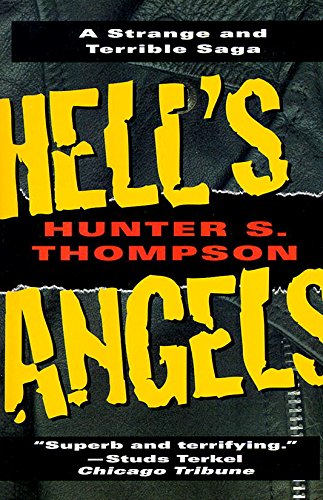As an avid reader, I often find myself drawn to the genre of nonfiction that explores unique subcultures, and when I stumbled upon Hunter S. Thompson’s Hell’s Angels: A Strange and Terrible Saga, it felt like a must-read. With its promise of a deep dive into the notorious world of motorcycle gangs during the 1960s, I couldn’t resist the urge to uncover the truth behind this emblem of American counterculture.
Thompson’s tale begins amidst California’s fog-filled streets as outlaw motorcyclists roar out to raise hell. His vivid recounting of living alongside the Hell’s Angels enveloped me in a gritty, exhilarating world. Over almost two years, Thompson not only observed but participated in the chaotic life of these notorious figures, effectively capturing a singular moment in American history that’s as electrifying as it is horrifying.
One of the standout aspects of Hell’s Angels is Thompson’s immersive writing style. He doesn’t simply narrate; he pulls you in, allowing you to feel the wind in your hair as you ride alongside these misfits. This was echoed by Jon Strickland, who praised Thompson’s approach as both interactive and detailed, making you feel as if you were right there with the notorious gang. The writing is laced with humor, a mix of sardonic observations and the brutal reality of life with the Angels. I found myself laughing at the absurdity of certain situations, yet uneasy at the underlying tension often present.
Yet, amidst these triumphs, some readers express that the historical accuracy of Thompson’s account feels muddled. While many admire it as a significant piece of American social history, others argue that it sometimes drags, losing focus under the weight of too much detail. I found this particularly relevant in moments where Thompson veered into philosophical discussions about the Angels’ existence—a touch that struck me as compelling at times but also ponderous at others.
As I turned each page, I appreciated how Thompson illuminated the paradox within the Angels—describing them as both chaotic and surprisingly organized, led by figures like Sonny Barger who navigated the legal landscape with cunning prowess. This duality made the group’s portrayal multifaceted, showcasing them as both deviant and vulnerable in their reality, which reminded me of the complex nature of subcultures. Thompson’s acerbic yet insightful comments highlight their Hell’s Angels’ quirks while laying bare their humanity, a balance that enriches the reading experience.
However, the book is not without its drawbacks. There were moments where the writing felt almost too detailed or overwhelming, as some fellow readers have observed, which occasionally bogged down the narrative. I agree with that sentiment; while I can appreciate Thompson’s dedication to authenticity, there were sections that could have benefited from a bit more brevity to maintain my engagement.
In conclusion, Hell’s Angels: A Strange and Terrible Saga is a rich, immersive read that offers a gripping portrait of a pivotal moment in American culture. With a well-deserved rating of 4.5 stars, I highly recommend it not just to those interested in motorcycling or counterculture, but to anyone who revels in a well-told story that combines humor, grit, and societal reflection. Whether you admire the allure of the freewheeling lifestyle or seek to understand its implications in American history, this book will leave you thinking long after you’ve turned the last page.








